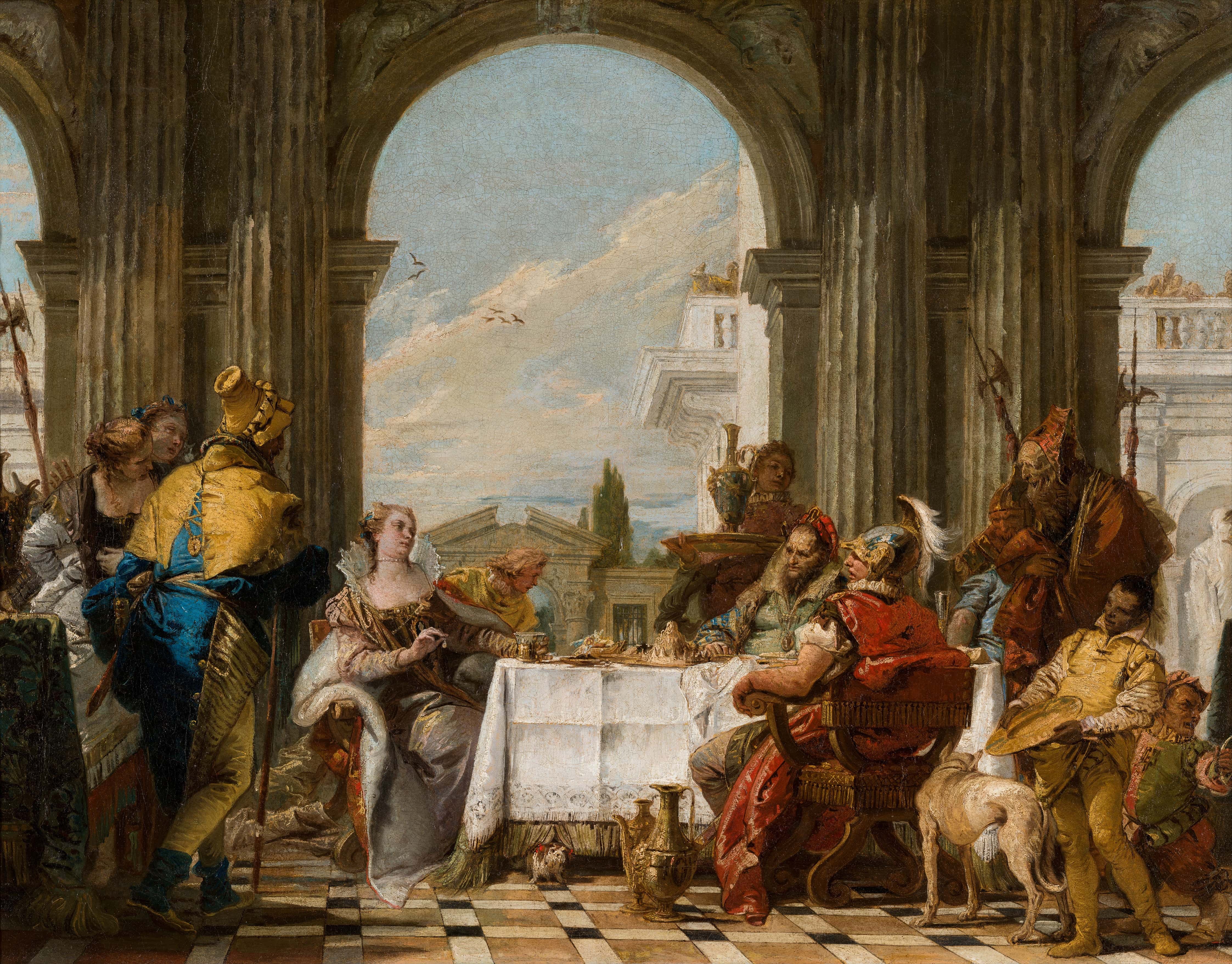
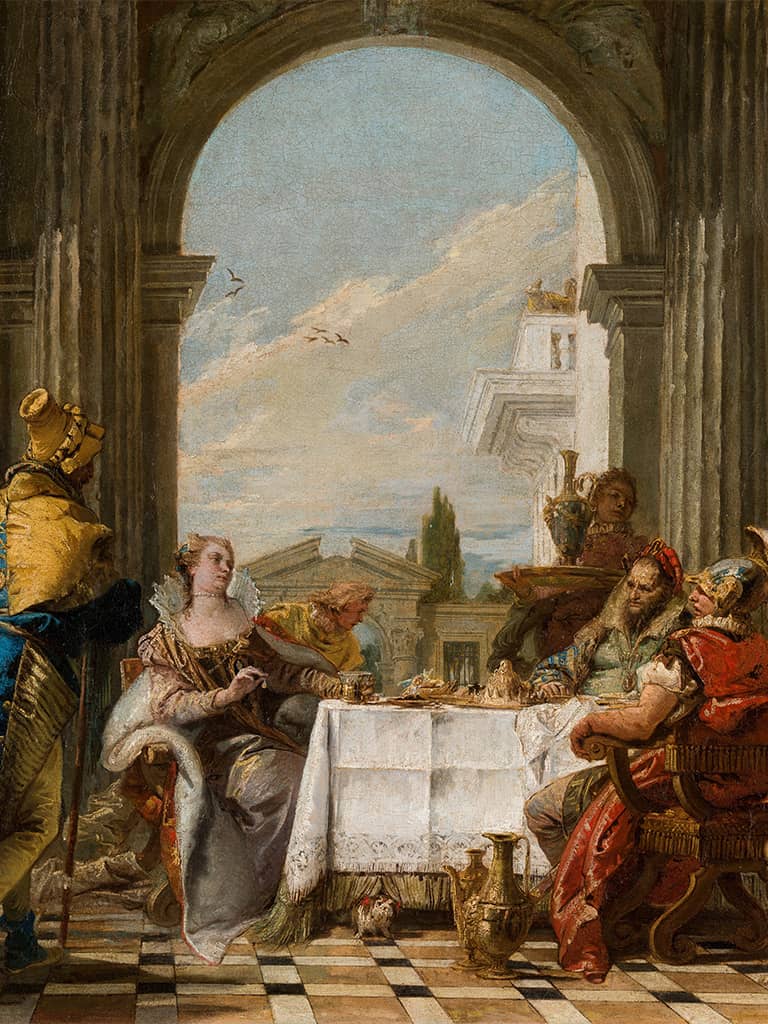
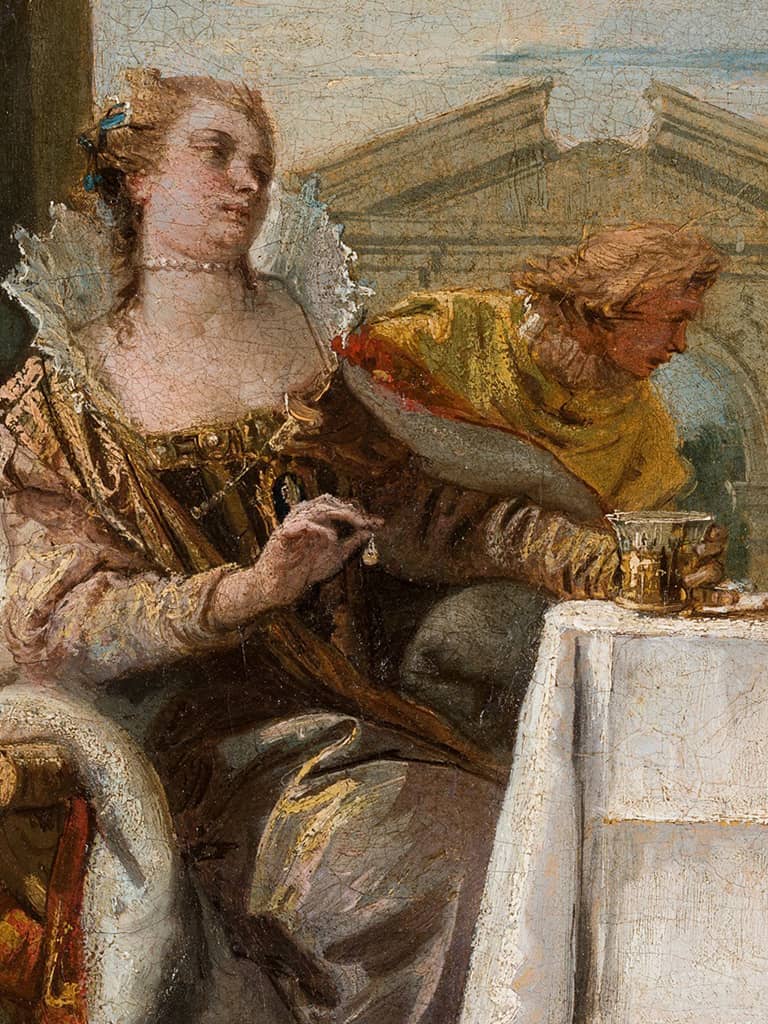
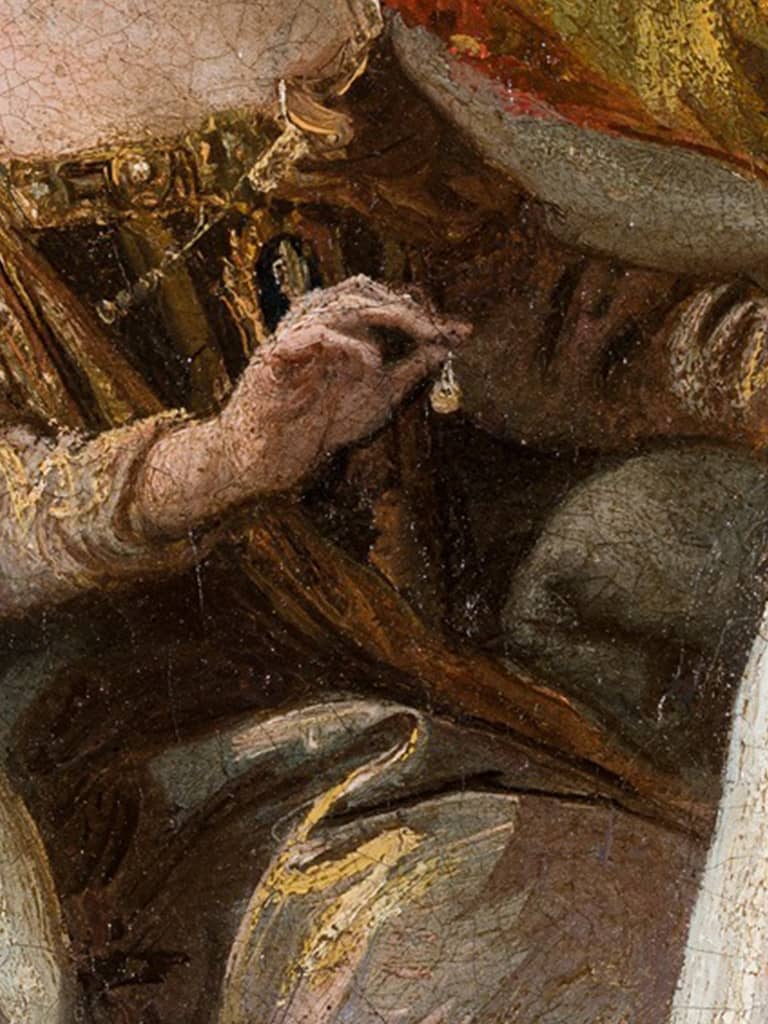
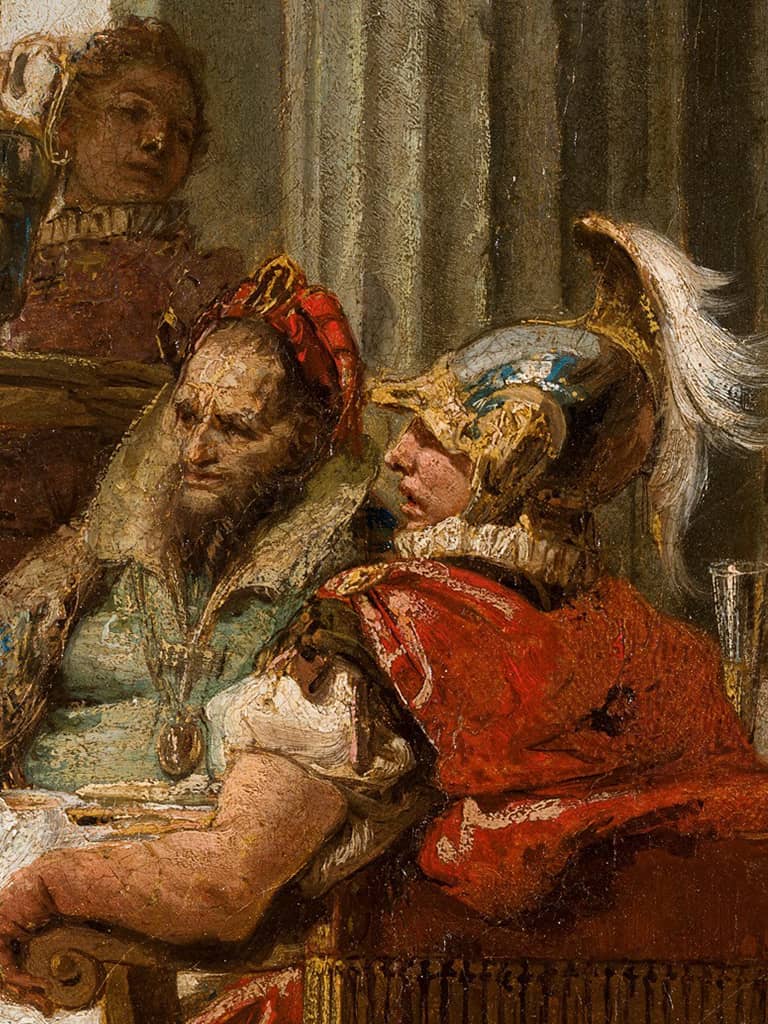
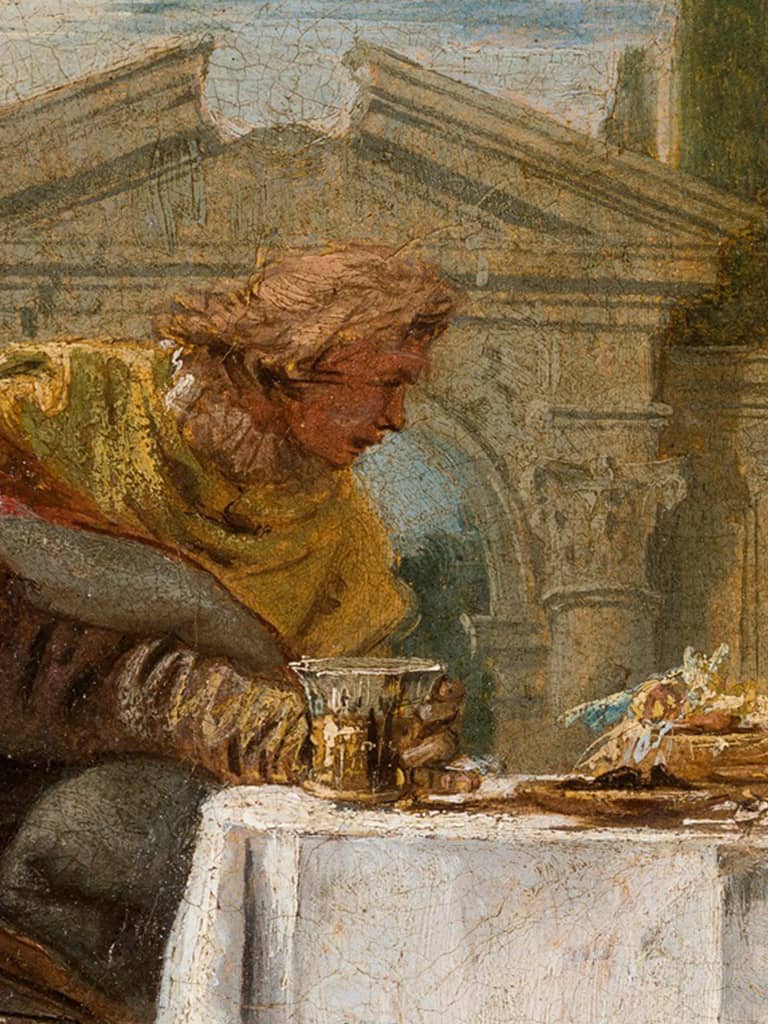
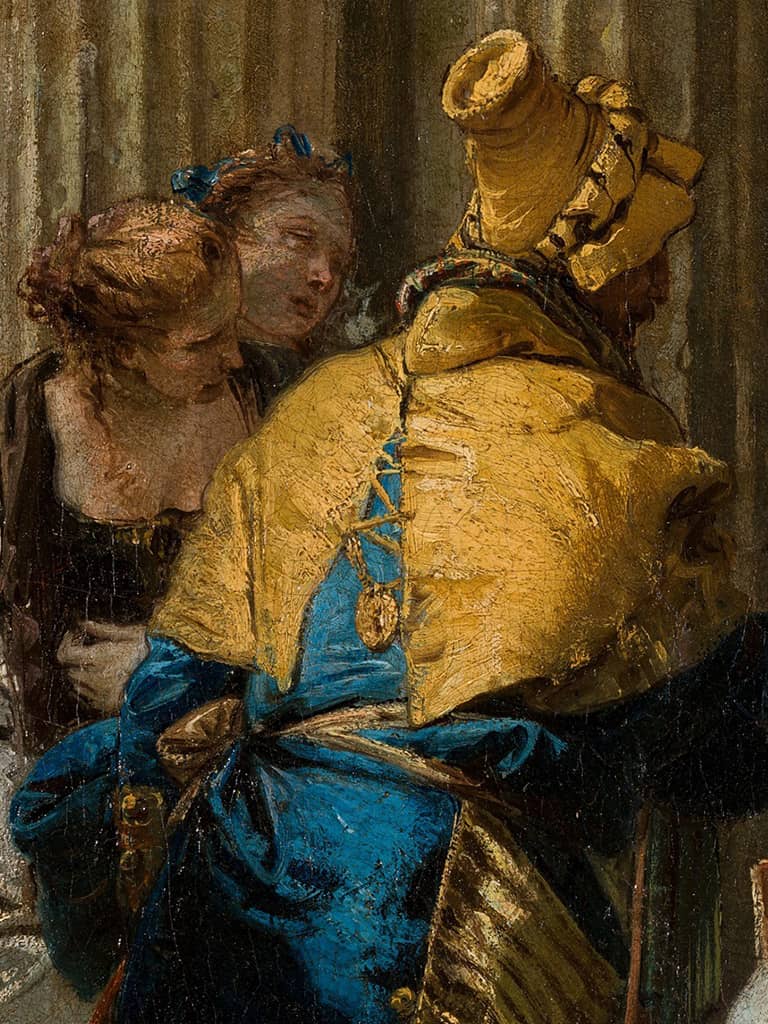
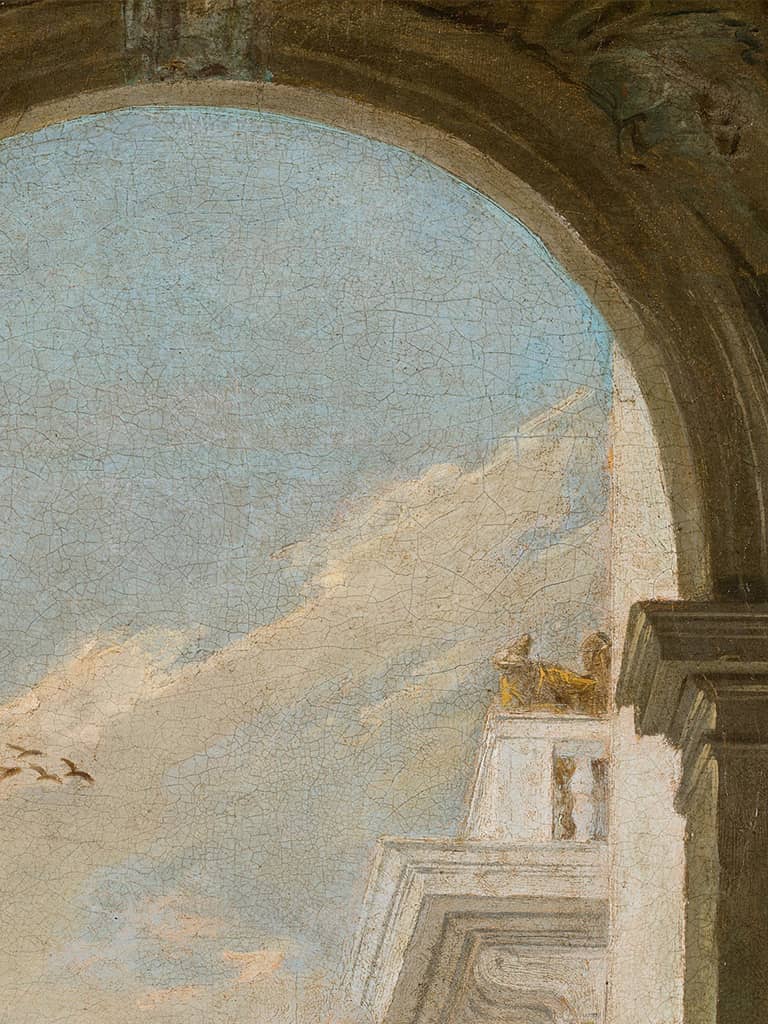
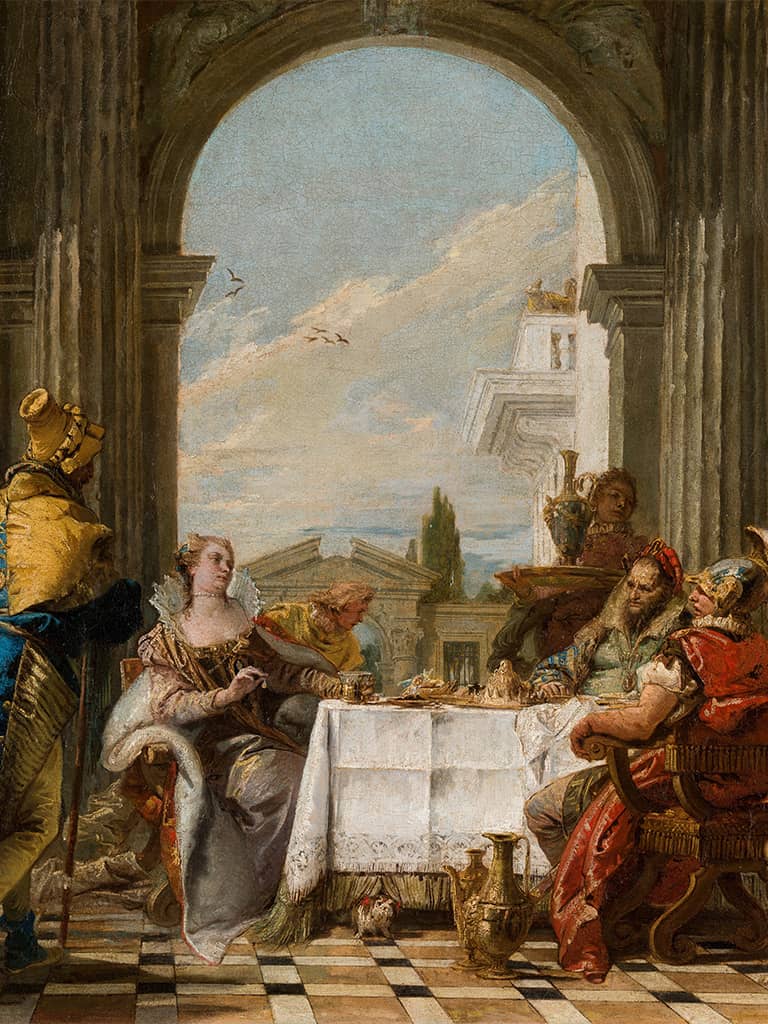
Cleopatra's gamble
Cleopatra, the last queen of Egypt, invites the Roman general, Mark Antony, to a luxurious feast. Anxious to assert the power and wealth of her country, she claims she will offer the most expensive feast in history.
To do so, she has a strategy – she dissolves a precious pearl in a glass of vinegar, which she drinks before the dumbfounded gaze of her adversary.
A court of richly adorned oriental servants surrounds the queen and Mark Antony in ceremonial costume and a plumed helmet. Tiepolo would revisit this theme in 1745 in the famous frescoes of the ballroom of the Labia Palace in Venice.
References to antiquity, such as the portico in the background, are coherent with the time of the story as told by Plutarch in his Parallel Lives. They are mixed with modern elements that evoke the Venetian splendour of the 18th century such as Cleopatra's ceremonial robe.
The painter gives particular importance to the richness of the details in the clothing and accessories. The theatrical construction of the scene, reminding us of a stage filled with actors, reinforces its dramatic aspect in the grand tradition of the Venetian school, of which Tiepolo was a major representative during the 18th century.
The representation of the Venetian palace where the feast takes place recalls the art of Paul Veronese who had painted the sumptuous Wedding at Cana (1563, Paris, Musée du Louvre) two centuries earlier.
This small painting, which demonstrates careful technique and an accomplished composition, is what is known as a "modello", a preparatory work for a monumental canvas that is now preserved in the National Gallery of Melbourne.